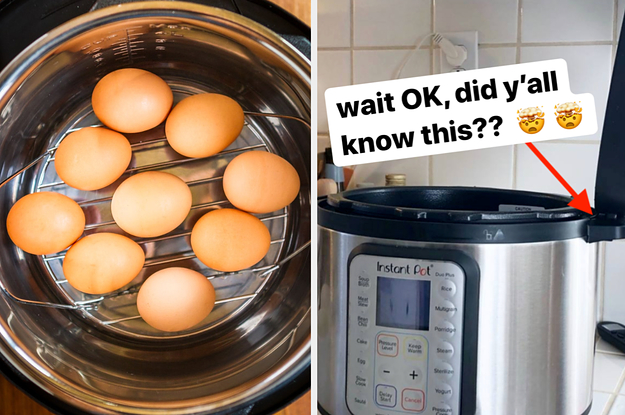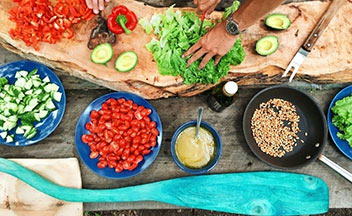
It's easy to be overwhelmed by the cost of cooking when you have limited funds. Seasonal and green foods are cheaper. It is important to consider your protein intake. Eggs, for example, are cheap and can be cooked in many ways. White fish is also readily available and easily accessible. There are also ground beef, rabbit, and turkey as other meat options. These delicious and healthy options are available to you even if you don't have the budget.
Meal planning
A meal plan is crucial when cooking for a large group of people. If you don't have a plan you will end up not being able to organize your ingredients properly or cook enough to fill the fridge. Planning meals can save you time, money, and ensure your family eats healthy, nutritious meals every day. These simple tips will help you plan your meals.
Bulk buying
You can save money by buying in bulk while still enjoying delicious, healthy food. Although supermarket sales and warehouse clubs are tempting, don't buy too much. You will save money on groceries and pantry supplies by buying bulk. Just remember to plan ahead to make sure you have enough items to last for months. There are exceptions.
Reduced-priced cuts
If you are looking to reduce costs, it is always worth using lower-quality cuts of meat. These cuts of beef are generally cheaper per pound, and can also make your meal better. Here are some tips for using cheaper beef cuts in your recipes. Before you buy any cuts of beef, make sure to carefully read the labels. Some cuts are more tough than others and can take longer to cook.

Be creative
With the help of Adam and Natalie, who are international students, it is possible to get creative when cooking on limited funds. It is possible to make tasty meals on your budget by filling your pantry up with staples like non-perishable food. Adam and Natalie both recommend tools that will help you prepare delicious meals on the budget.
FAQ
Where can I find free online cooking lessons?
Many websites offer cooking lessons for free. YouTube can be searched for videos showing you how to make different meals. You can find thousands of recipes on certain websites. While you may have to pay a monthly charge, these websites allow you to try out the recipes for 30 days for no cost.
What is the best way to store leftovers?
Leftovers are usually stored in Tupperware containers. These containers keep food fresh and prevent odors forming. They also keep foods warm longer. Leftover food can be frozen in freezer bags. Place food in another freezer bag to prevent air escape when freezing. Once the food has frozen, you can transfer it to an airtight container like a zipper lock bag.
Can I learn to cook alongside my kids?
Yes! Children love to help in the kitchen. It's a fun activity that teaches them responsibility and teamwork. The whole process can be done by children, including washing and chopping vegetables. You will have your children enjoy helping you cook as long as they follow safe procedures when using knives.
How do I get motivated to cook?
When you cook with your family and friends, cooking is enjoyable. Cooking for one is easier than cooking for another. You can be inspired to cook if you try something new. This way, you will learn about new ingredients and techniques. To expand your culinary skills, you can also make use of recipes from other cultures.
What are some basic cooking skills?
Basic cooking skills include being able to read and measure ingredients, prepare food safely, clean up after yourself, and cook. This is the first step to learning how to cook. Cooking is also a great way to save money since you don't have to eat out all the time.
Statistics
- under 10 Kids have been taught that there is special food just for them, and Fiese says that 10 percent of kids will throw a tantrum if they don't get the food they want. (washingtonpost.com)
- The median pay for a chef or head cook is $53,380 per year or $25.66/hour, according to the U.S. Bureau of Labor Statistics (BLS). (learnhowtobecome.org)
- You'll be amazed that over 90% of CIA students receive scholarships and grants to finish their culinary studies. (ischoolconnect.com)
External Links
How To
How to make an omelet that is perfect
Omelets are a favorite breakfast food of mine. But how do they turn out so perfectly? I have tried many different recipes and methods, but none of them work. I have some tips and tricks to help you make delicious, fluffy omelets every single morning.
We should first know that eggs are very temperamental ingredients when making omelets. You must get them fresh, organically, and keep them cold until you cook. You must keep them cool enough to allow the whites to form properly and the yolks to become too runny if they're not kept at the right temperature. This causes your omelets to look oddly colored. If you're going to cook them immediately, it is best if the eggs are still warm.
You can also separate the egg before you add it to the pan. You don't want the white to get mixed with the yolk, as this could cause the egg to curdle.
You could end up burning the bottom half of the egg if the egg is added directly to the heat source. Instead, microwave the egg for 10 seconds before adding it to the pan. The microwave heat cooks the eggs just right without overcooking them.
Next, let's discuss mixing the eggs. Mix eggs well together. To do this, grab the bowl of the mixer and turn it upside down. Then shake the bowl vigorously. By doing this, the egg is thoroughly mixed with the air in the bowl.
Now comes the fun part - pouring the milk into the mixture. Mix half of the milk with the eggs. Then fold the eggs in half into the remaining milk. If you still see streaks of eggs, don't worry. These streaks will disappear once the omelet has been turned over.
After folding the eggs fold the pan onto medium heat. When the oil starts to hot, wait for the pan to cook. Once the oil starts getting hot, add 1/4 cup of butter to the pan and swirl it around to coat the entire surface of the pan. The lid should be carefully opened. Sprinkle salt in the pan. The salt will help to prevent the omelet's sticking to the pan.
Once the omelet has formed, cover the pan again and wait for the top side to set completely. Flip the omelet over using a spatula or flip the pan upside down. Cook the second side for a minute or so. Serve immediately after removing the omelet from its pan.
This recipe works best with whole milk, but skimmed milk also works.